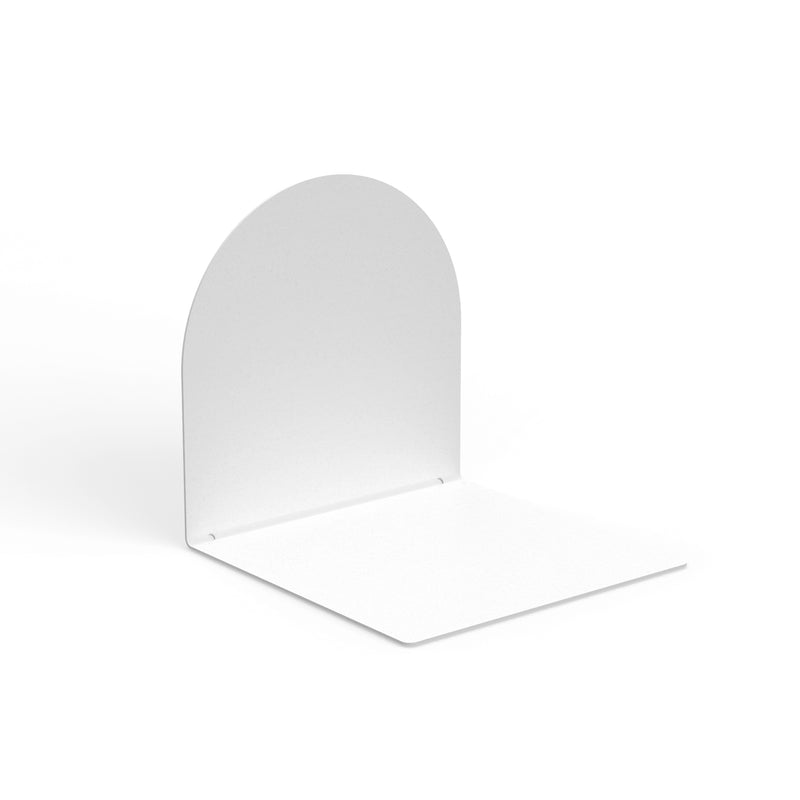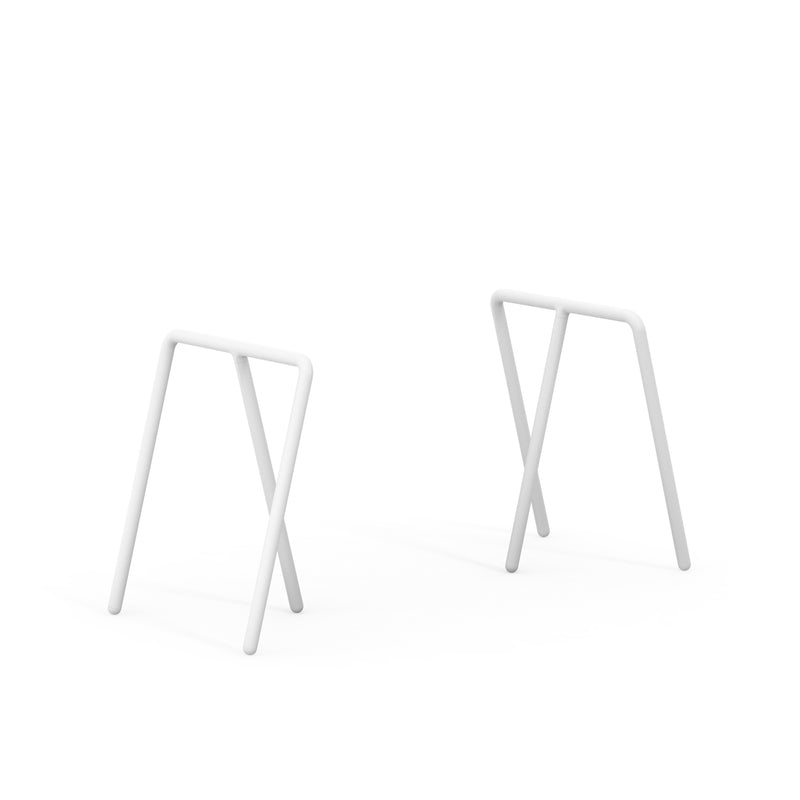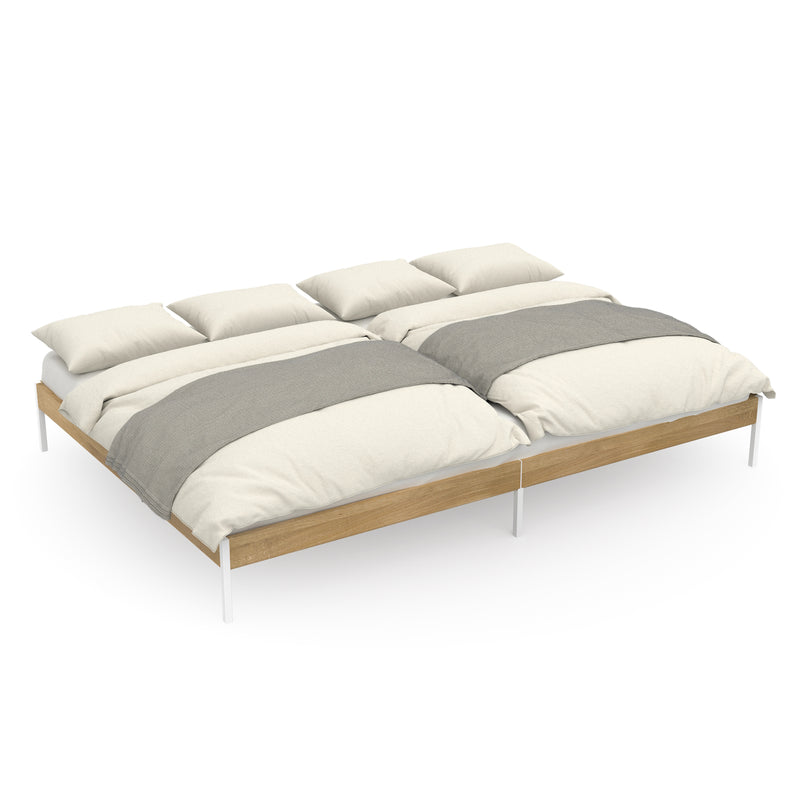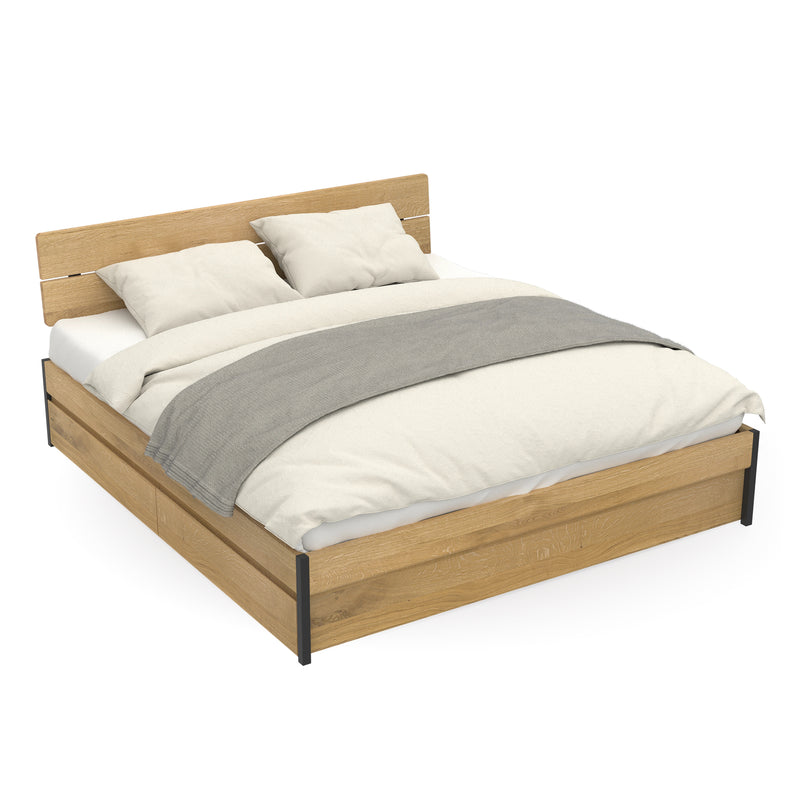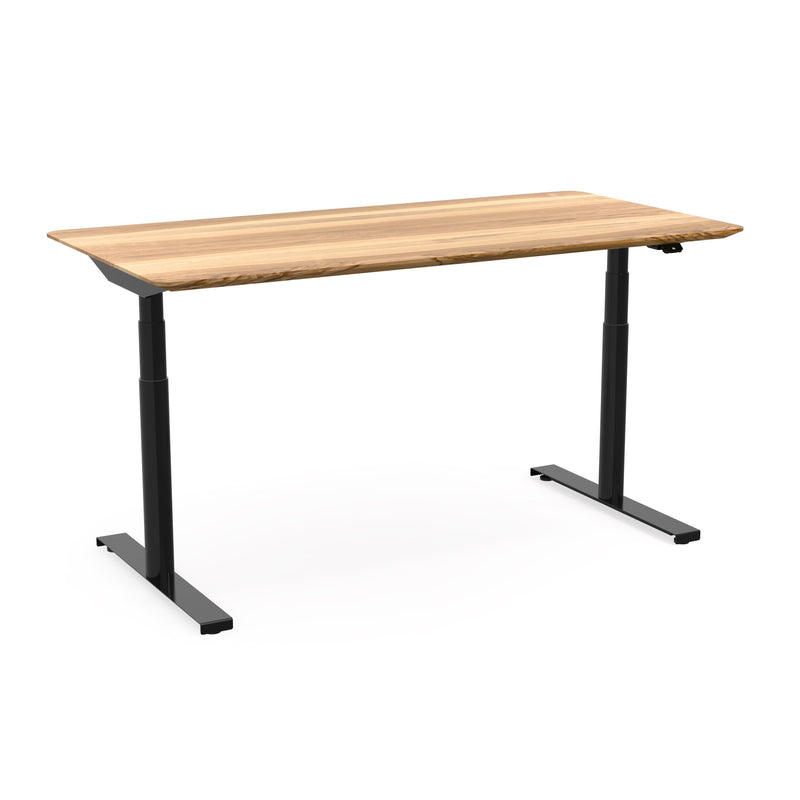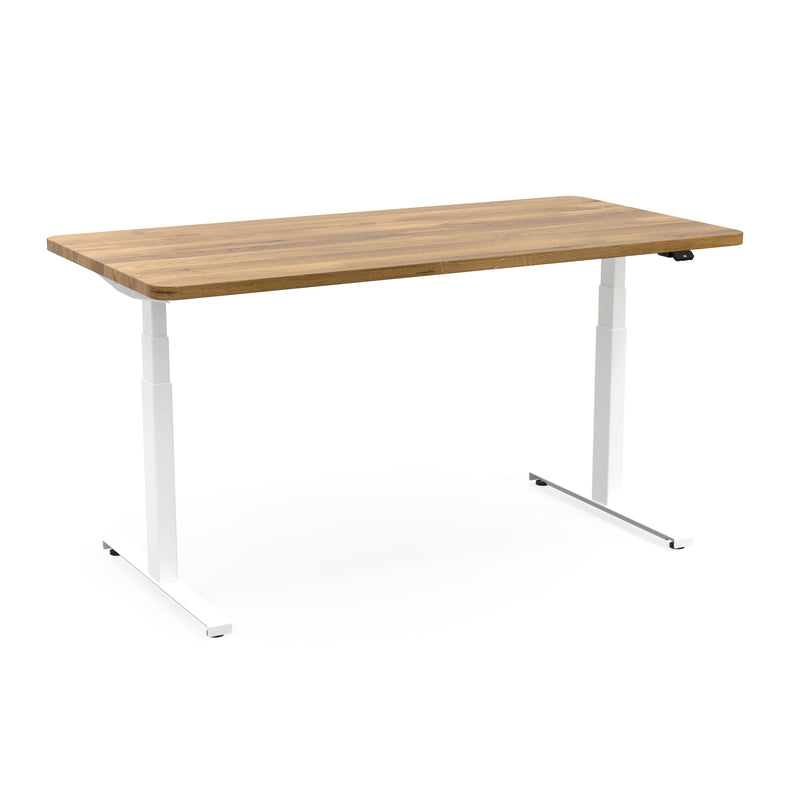Steel

Steel gives furniture a clean, modern look – especially when powder-coated. It is durable, recyclable and allows for delicate constructions with high stability. Ideal for minimalist designs or functional solutions such as height-adjustable tables.
How is steel treated in furniture?
Steel can be treated in many ways – such as painting, powder coating, galvanizing or polishing. Zinc coating is also a common method to ensure corrosion protection.
While untreated steel rusts when exposed to moisture, proper surface treatments prevent corrosion. Stainless steel, on the other hand, is particularly corrosion-resistant due to its alloy and can even be used outdoors.
In interior design, steel is mostly powder-coated. A colored plastic powder is electrostatically charged and evenly sprayed onto the metal. The coated part is then heated in an oven, causing the powder to melt and form a very uniform, solid & resistant layer.
Powder-coated steel comes in glossy, matte or textured finishes, with textured coatings often offering slightly more resistance.
How does steel affect furniture design?
Coated steel and stainless steel give furniture a clean, contemporary look. The cool, smooth surface appears high-quality and minimal – ideal for minimalist or industrial styles.
Powder coating allows for nearly any color and thus great design freedom. In practice, timeless tones like white or black tend to dominate.
The matte or satin finish of coated steel reflects little light and gives furniture a calm, solid presence. Stainless steel, on the other hand, appears elegant and light – almost floating – due to its soft sheen.
Combined with warm natural materials like wood, an exciting, modern contrast is created that connects clean lines with natural warmth.
Overall, steel gives furniture a clear, modern and durable character – a contrasting material that visually complements natural elements and creates a harmonious balance.


Ecological footprint of steel
Steel is a recyclable material and plays a central role in the circular economy. While its production is energy-intensive, steel can be reused almost indefinitely without loss of quality – making it valuable in the long term from an ecological perspective.
1. Sustainability of raw material extraction
Steel is made from iron ore, which is available worldwide in large quantities. However, extraction and processing require a lot of energy and cause emissions. Advances in green steel production – e.g., using hydrogen instead of coal – are steadily improving the balance. However, these developments are still in their infancy: in Germany, the steel industry plans to convert about one third of its primary steel production to climate-friendly hydrogen-based processes by 2030.
2. Processing and energy demand
Compared to wood or other natural materials, steel production is more energy-intensive. Blast furnaces and casting processes consume large amounts of energy. However, due to its durability and recyclability, steel is considered a sustainable material – especially when made from secondary raw materials.
In the EU, 40–45% of steel production comes from recycled steel (secondary steel), which requires up to 75% less energy than primary steel.
Regional production and short transport routes can further reduce the CO₂ footprint.

3. Durability
Steel is extremely durable and resilient. Furniture or constructions made of steel can last for decades or even centuries. Its weather resistance and mechanical strength make it ideal for high-stress areas.
4. Reusability
Steel is one of the most recycled materials in the world. After use, it is melted down and processed into new products. Almost 90% of structural steel in Europe comes from recycling processes. Steel furniture can also be disassembled, recoated or repurposed.
Technical properties of steel
| Property | Value |
|---|---|
| Material type | Metal |
| Density | 7.85 g/cm³ |
| Compressive strength | 250 – 400 N/mm² (depending on alloy) |
| Bending strength | High, depending on processing |
| Hardness | Brinell: 120 – 200 HB (varies widely) |
| Elastic modulus | ~210,000 N/mm² |
| Durability | Very resistant to mechanical stress |
| Weather resistance | Only when treated or stainless steel |
| Color | Uncoated: silver-gray to black |
| Workability | Very good, but requires special tools |
| Applications | Furniture, construction, tools, machines |
Steel at ekomia
Even though steel has certain disadvantages due to its high energy requirements during production, we use it deliberately – especially for its robustness, durability and excellent recyclability.
Thanks to its high strength, steel can be processed into much slimmer profiles than, for example, wood. This allows for particularly lightweight, delicate furniture designs that are still very stable – as seen in our Cosmic collection.
Steel also enables furniture constructions that would be difficult to achieve with other materials – such as height-adjustable desks or particularly load-bearing frames.
We exclusively use powder-coated steel, which is durable and easy to maintain. We especially like to combine it with solid natural wood – for a warm, modern material contrast.

Questions & answers for Steel
Here we answer some questions about Steel that are frequently asked by other users.
Do you still have any questions?
Do you have any questions or comments on this topic? Write a comment, we will be happy to answer.



